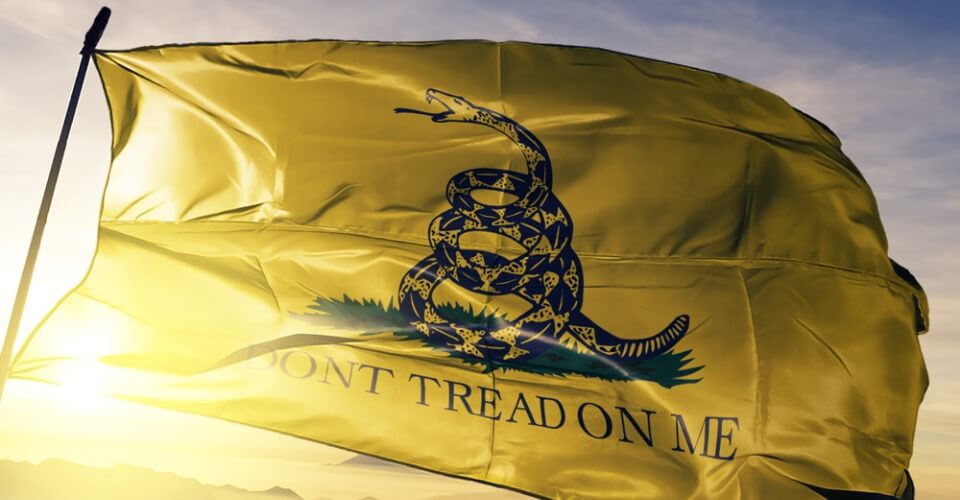The American Revolution signified the power of unity. One War that compiled the resilience of all the colonies together stood victorious in the face of the titans of War, Great Britain.
Under the consolidated leadership of George Washington, the patriotic spirit of fighting for freedom unified the thirteen colonies.
Starting from 1775, something shifted in America’s atmosphere. People were ready to put aside their differences and join hands against the external entity. This similar unity was first observed during the French and Indian War between 1754 to 1763. In 1954, a political cartoon, “Join or Die,” was published in Benjamin Franklin’s Pennsylvania Gazette.
The rattlesnake in this satirical illustration depicted the message that if the thirteen colonies couldn’t join forces, then they should be ready for the tyrannical rule of an external party. This sparked patriotism amongst the colonies and waged a formidable war.
After winning the former battle, the Thirteen Colonies were ready to fight for the declaration of being independent states. Thus began an 8-year quest for independence and the relentless fight with the foundation of the coalition.
The American Patriot Forces exhibited warrior-like determination, sacrificing their existence to seize the freedom of their people. To motivate the troops, various flags were hoisted, representing the united spirit and intimidating the enemies. One such flag is still remembered for the unwavering revolt against the British.
What Does the Gadsden Flag Mean?
The Join or Die flag was considered iconic during the American Revolution War merely because of the context behind it. A satirical article was penned by Franklin in 1951 in the Pennsylvania Gazette. The article describes the symbolism behind the snake depicted on the flag. According to the bold and brave Founding Father, he made a petty implication that he would repay Britain’s royal family for shipping convicts to America by setting rattlesnakes around England.
Inspired by Franklin’s snake symbolism, one man illustrated his own version of what the American Revolutionary War represented. Christopher Gadsden was appointed a general in the Continental Army and a congressional delegate. In February 1776, he was designated commander of South Carolina’s military forces. In the same month, during the Provincial Congress of South Carolina, Gadsden presented a flag that enthralled everyone in attendance.
The flag had a coiled rattlesnake that looked dangerously ready to attack. Beneath the snake was the famous slogan of the Marines – “DON’T TREAD ON ME.” Gadsden integrated the snake as a nod to Franklin’s depiction, insinuating an aggressive war against the British. According to the author of “Flag: An American Biography,” Marc Leepson, the politician wanted the snake to serve as a warning to Britain not to violate Americans’ liberties that would rally support against coercion.
Christopher Gadsden gave this Gadsden flag to the Commodore of the Continental Congress’s naval forces, Esek Hopkins. The Commodore hoisted the flag on his Ship, USS Alfred.
What Does the Gadsden Flag Mean in the 21st Century?
Even though the United States of America embraced the striped flag after Independence, the Gadsden Flag resurfaced in the 21st century with a different subtext. The flag was suddenly claimed by the libertarian undertones. This stemmed from the patriotic American spirit the flag represented.
2006: Brand giants like Nike and Major League Soccer incorporated the Gadsden flag in their campaigns to symbolize American ethos.
2009: The symbolism shifted to a more extreme spectrum when Tea Party rallies were held during Obama’s administration. These rallies had racial context, given that Obama was America’s first black president. Hence, by association, the Gadsden Flag was also tarnished by racism. The conservative right-wing Tea Party movement used the Gadsden Flag to remind people of what America first represented.
2014: The first complaint against the usage of the flag was filed by an African American for the U.S. Postal Service with the Equal Employment Opportunity Commission (EEOC). He stated that his coworker was wearing a hat with the flag’s design that was sometimes perceived as a taunt of racially-inclined messages. Another argument was that the flag’s creator was a slave owner/trader.
2023: On August 30, a 12-year-old Vanguard School student, Jaiden Rodriguez, was asked to remove the Gadsden flag pin from his backpack. Apparently, the School officials said it was “distracting” and “offensive” to other students.
The officials objected to the little boy when he refused to remove it. But this sparked an online outrage, where netizens slammed the school for not letting the kid express himself and stand by his beliefs.
Netizens React To The School’s Objection On The Gadsden Flag
“The Gadsden flag, bearing the iconic ‘Don’t Tread on Me,’ came from the American Revolutionary War. Benjamin Franklin used it for his Join, or Die in 1754. It symbolizes a fight for freedom and defiance for a tyrannical government. Get your kids out of public school!”
“The Gadsden flag is a proud symbol of the American revolution and a iconic warning to Britain or any government not to violate the liberties of Americans. It appears on popular American medallions and challenge coins through today and Ben Franklin also adopted it to symbolize the union of the 13 colonies. It’s a great teaching moment for a history lesson!”
“I taught Social Studies (US Govt) in high school and these were the flags I had hanging up in my classroom. Bravo to this young man for knowing the Gadsden Flag has nothing to do with slavery.”
“Ironically, The Gadsden flag was a Revolutionary warning to the British that the colonists would defend themselves from any royal attempt to coerce them or abuse of their liberties This is the absolute state of public school.”
What is your take on this case? Do you believe that the meaning of the Gadsden flag has changed?
Did the school overreact to a pin on a kid’s backpack? Let us know in the comments section below.

